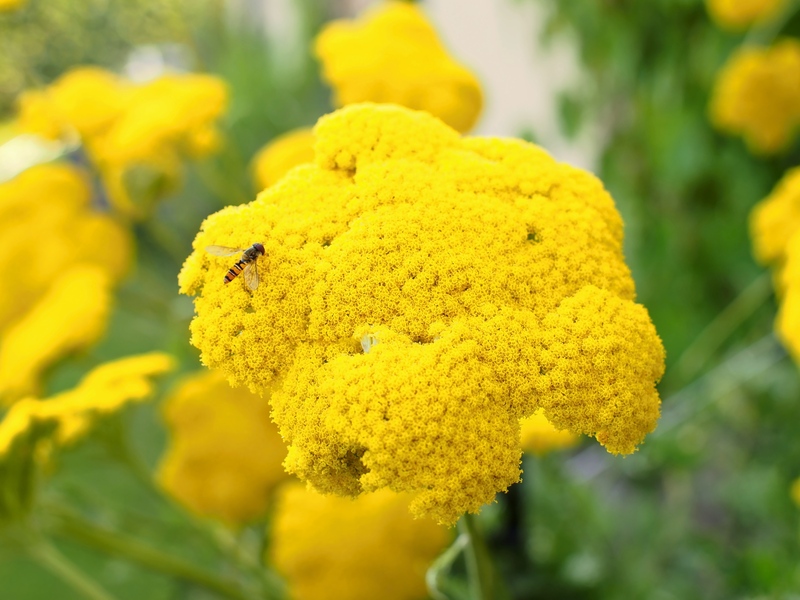How Lawns Contribute to Ecosystem Health
The Role of Lawns in Carbon Sequestration
Lawns, often overlooked in conversations about the environment, play a pivotal role in carbon sequestration. Grass, just like trees and shrubs, absorbs carbon dioxide (CO2) from the atmosphere and stores it in the soil. This process helps mitigate the effects of climate change by reducing the overall concentration of greenhouse gases.
When grass blades undergo photosynthesis, they absorb CO2 and convert it into oxygen, a process critical for clean air. Additionally, their root systems store carbon in the soil, creating a carbon sink that can lock away substantial amounts of CO2 for extended periods.

Enhancing Soil Health
A well-maintained lawn can significantly improve soil health. Grass roots help to aerate the soil, promoting better water infiltration and reducing the risk of soil erosion. This is especially crucial in urban areas where soil can become compacted due to heavy foot traffic and construction activities.
Healthy soil is brimming with microorganisms, which play a vital role in breaking down organic matter and recycling nutrients. Lawns with robust root systems contribute to a thriving soil ecosystem, enhancing fertility and supporting various plant life.
Supporting Biodiversity
While monoculture grass lawns are often criticized for their lack of biodiversity, they can still offer refuge to numerous insects, birds, and small mammals. Lawns serve as a habitat and food source for many species, including pollinators like bees and butterflies, which are essential for the health of the broader ecosystem.
To maximize the biodiversity benefits of lawns, homeowners can adopt practices like integrating native plant species, creating wildflower borders, and reducing the frequency of mowing. These efforts can transform a simple lawn into a mini-ecosystem teeming with life.
Water Management and Flood Control
Grass lawns play an essential role in water management. They act as a natural sponge, absorbing rainfall and reducing surface runoff. This is particularly beneficial in urban areas prone to flooding, as a well-maintained lawn can help mitigate the impact of heavy rains.
Moreover, lawns filter water as it infiltrates the soil, removing pollutants and improving groundwater quality. This natural filtration process is crucial for maintaining clean water supplies and supporting aquatic ecosystems downstream.
Temperature Regulation
Lawns contribute to regulating temperatures in their immediate environment. Grass surfaces absorb less heat than asphalt or concrete, helping to cool urban areas and reduce the urban heat island effect. This temperature regulation is especially beneficial during hot summer months, providing a cooler, more comfortable outdoor space for people and animals.
Pros and Cons of Lawns
Pros:
- Carbon sequestration: Reduces atmospheric CO2 levels.
- Soil health: Promotes soil aeration and fertility.
- Biodiversity: Supports various species when managed sustainably.
- Water management: Reduces runoff and improves water quality.
- Temperature regulation: Mitigates the urban heat island effect.
Cons:
- Water usage: Lawns can require substantial irrigation, straining water resources.
- Monoculture: Traditional grass lawns often lack biodiversity.
- Maintenance: Regular mowing and fertilization can be time-consuming and resource-intensive.
- Pesticides and fertilizers: Overuse can harm local ecosystems and water quality.
Tips for Sustainable Lawn Care
1. **Mow high and less frequently**: Higher grass shades the soil, reducing evaporation and stress on the grass.
2. **Use native or drought-tolerant species**: These plants often require less water and are more resilient to local conditions.
3. **Reduce chemical usage**: Opt for organic fertilizers and pest control methods to minimize environmental impact.
4. **Incorporate native plants**: Adding native plant species can enhance biodiversity and reduce maintenance needs.
5. **Water wisely**: Water deeply but infrequently, focusing on the early morning or late evening to reduce evaporation.

Takeaways
- Lawns have significant environmental benefits, including carbon sequestration, improved soil health, and temperature regulation.
- Sustainable lawn care practices can maximize these benefits while minimizing negative impacts like water usage and chemical runoff.
- Integrating native plants and reducing mowing frequency can enhance the biodiversity of lawn spaces.
Conclusion
Lawns, when managed responsibly, offer numerous benefits that contribute to ecosystem health. From carbon sequestration and soil health to supporting biodiversity and managing water, lawns play a crucial role in urban and suburban environments. By adopting sustainable lawn care practices, we can ensure that our green spaces not only enhance our own well-being but also support the broader environmental ecosystem.





